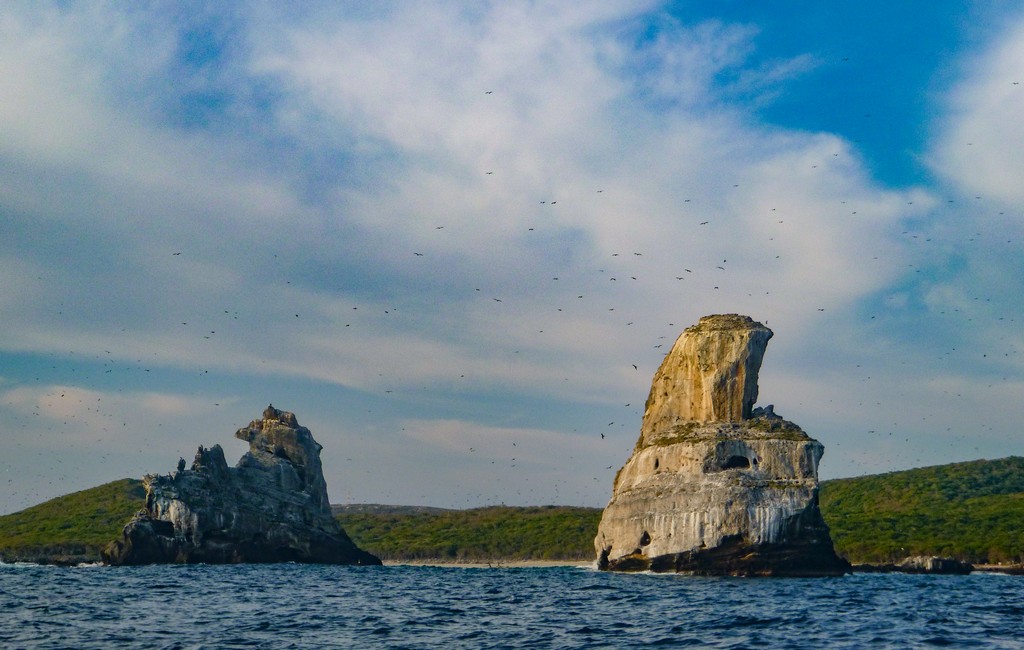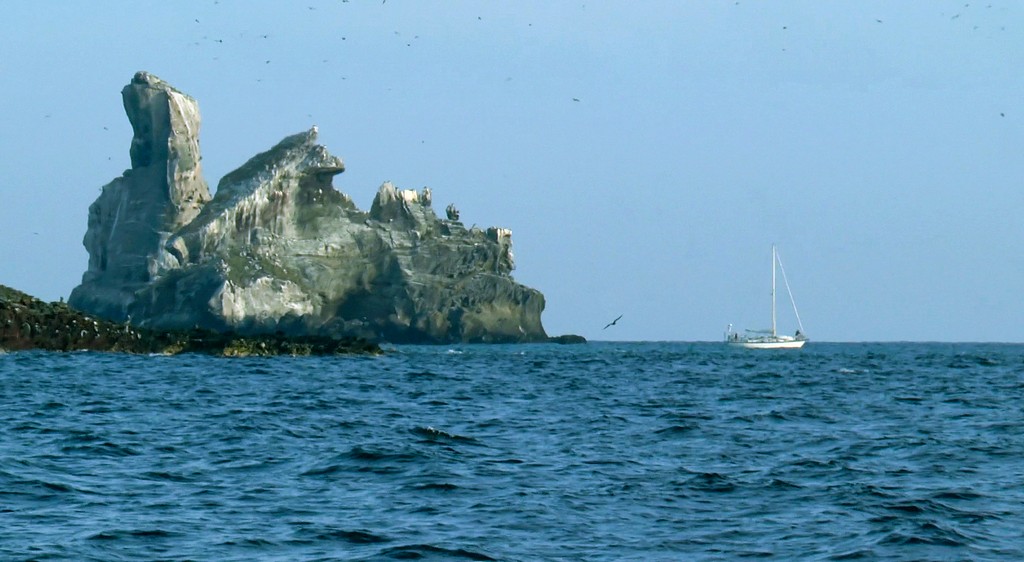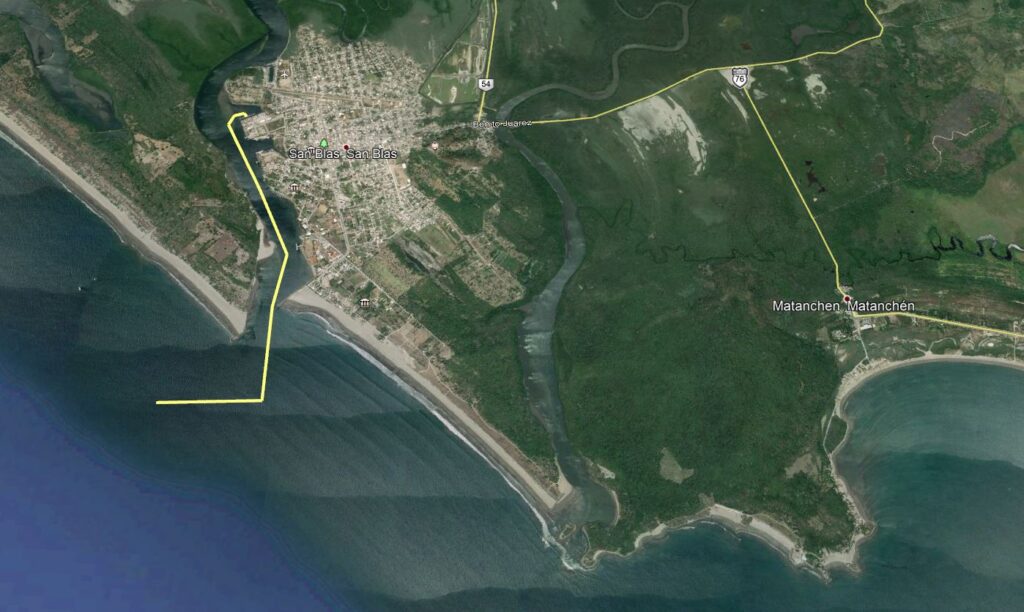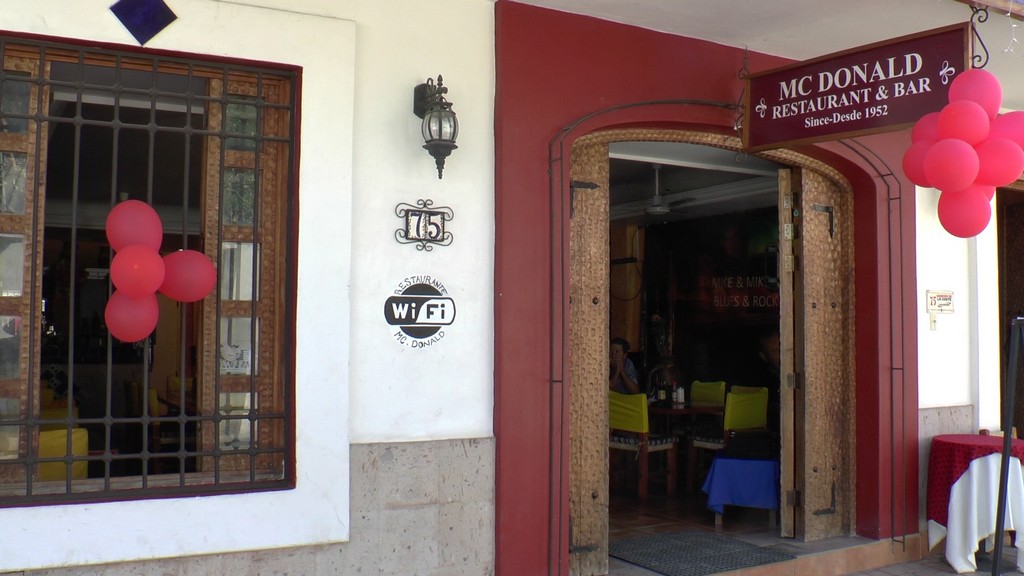Thursday, 23 January 2014 – We continued our way south from Mazatlán. By 2:00 a.m. the sea was like glass and the half-moon sparkled on the ocean as Anita came on watch to relieve me. This continued until about 4:30 a.m. when the wind picked up from the East. Unfortunately, by 7:00 a.m. when we closed with Isabella, the wind had increased to just over 14 knots and the sea along with it. As the wind was out of the East, anchoring near the large Pinnacles on the eastern side of the Island was out of the question; it would have put us on a Lee shore in what appeared to be worsening weather. We watched the one boat anchored there being tossed about.
Still, we were amazed by Isabella, from afar it looked like it had swarms of Gnats hovering over areas of the Island and it was only when we got closer you could make out individual birds, literally thousands of them circling in the warm morning air.
We continued along the east side of the Island to check out the small bay on its southern end however the swell was rounding the headland there and making the inside of this small cove too rough. With no other option, we reluctantly changed course to San Blas, about eight hours away. We had now covered just over 100 miles since leaving Mazatlán.
Of course, after three hours the wind died and the sea calmed down, but that is the sailing life. Our paper charts did indicate that Isabella was poorly marked and indeed we found the Island misplaced by almost two miles as was another rock on the way to San Blas called Pieda Blanca. Our Chart plotter showed us passing 100 feet from this Island’s rock wall even though we were almost a mile from it. Our Spot Tracker path even showed us sailing over part of the Island!
By noon we had no wind and what little there was, had moved directly behind us so up went the temperature and humidity and by midafternoon John was on the foredeck with a bucket of saltwater cooling off. As a consolation prize, we did see numerous whales breaching and in one the instance, John saw a Giant Manta Ray explode out of the water not more than 100 yards from the boat.
By 3:30 p.m. we were approaching the entrance to San Blas and the El Pozo Estuary. The entrance to the estuary has a bar with shifting sand banks and we were entering a couple of hours after high tide. After aligning Hilbre with a mark, we headed in holding a steady course and watching the depth meter. We were holding at 17 feet when a fishing panga passed us and waved to us that we should steer a little more to our port. Following his advice, we very quickly had 24 feet of water under the keel. To the south is Matanchén Bay, a popular anchorage for cruisers that has Palapas along the beach.
The El Pozo estuary has that sleepy, slow paced feel of many tropical rivers or estuaries with old buildings dotting the banks and small fishing boats pulled up in groups along the shore. Having lived in the tropics, it had a wonderfully comfortable and familiar feel to. We headed up the estuary a short distance to the Fonatur Marina. Here we found willing hands pointing out a slip for us and ready to take our dock lines. After 30 hours at sea and a comfortable overnight trip, we had arrived in San Blas about 147 miles from our departure point in Mazatlán.
An hour or so later, after checking in, Anita was ready and anxious to hit the town for some food. It was quite dark as we wandered through the rough cobbled streets of this unfamiliar town heading as best we could, towards the Plaza, the social center of San Blas. A ten-minute walk found us at the Mercado, next to the Plaza and then we found the “Social Club,” the bar hang-out of the Ex-pats in the area. They directed us to some restaurants. We ended up at the Restaurant McDonald where we struck up a lively conversation with a couple who were driving south to Zihuantanejo. We enjoyed our meal there and then headed back through the dark streets to the boat for some much-needed sleep.









